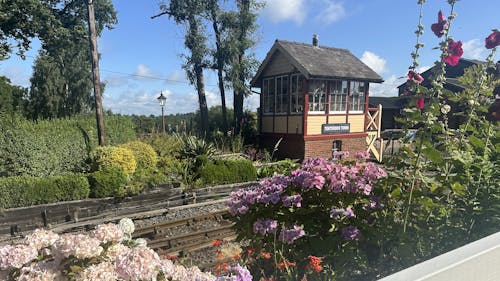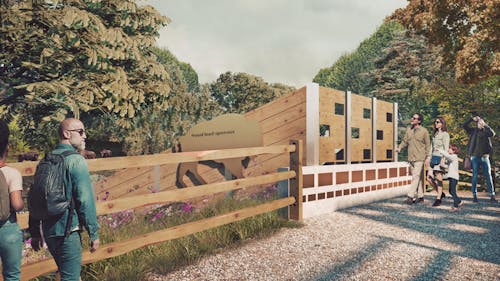Protected Species & Ecological Services
What can we do for you?
Adonis Blue Enviromental Consultants supplies a range of traditional ecological services across the UK. Our ecological team do more than just advise, survey and report. We are there to support beyond the lifespan of any project. Our mission is to combine the need for development with nature to develop a nature recovery network for Kent and beyond.
Protected species surveys:
Our local knowledge and specialist expertise will provide you with all the ecological advice needed for any project. Refer to our species calendar below for the available time of year specific surveys can be conducted. These services include but are not limited to:
Great Crested Newts (GCN) / Amphibians
You will need surveys if your development could potentially harm or disturb GCN. For example, developments within 500m of a pond are at high risk for GCN.
Our biggest newt, the great crested newt is almost black in colour, with spotted flanks and a striking, orange belly. It has warty skin and males have a long, wavy crest along the body and tail during the breeding season.
Protected in the UK under the Wildlife and Countryside Act, 1981. Priority Species under the UK Post-2010 Biodiversity Framework. Listed as a European Protected Species under Annex IV of the European Habitats Directive.
Reptiles
You will need surveys if your development could potentially harm or disturb reptiles. For example, developments with suitable habitats (long grass, rubble piles, areas of direct sunlight).
There are six native reptile species in the UK. These comprise three species of snakes - Adder, grass snake and smooth snake and three species of lizards - Common lizard, sand lizard and slow worm.
Protected in the UK under the Wildlife and Countryside Act, 1981. Priority Species under the UK Post-2010 Biodiversity Framework.
Water vole
You will need surveys if your development could potentially harm or disturb water vole. For example, developments with suitable habitats (rivers, streams, marshes, reedbeds or wet moorland).
The water vole has chestnut-brown fur, a blunt, rounded nose, small ears, and a furry tail. It is much bigger than other vole species.
Protected in the UK under the Wildlife and Countryside Act, 1981. Priority Species under the UK Post-2010 Biodiversity Framework.
Bats - PRA, Activity, Hibernation, Emergence
You will need surveys if your development could potentially harm or disturb bats or their roosts. For example, developments with suitable habitats (buildings, trees, bridges).
The UK has 17 breeding bat species and 18 species which occupy our shores.
Protected in the UK under the Wildlife and Countryside Act, 1981. European Protected Species under Annex IV of the European Habitats Directive. With some species a priority species under the UK Post-2010 Biodiversity Framework.
Badger
You will need a survey if your development could potentially harm or disturb badgers or their setts.
The black-and-white striped badger is a well-known species in the UK. It is our largest land predator feeding on small mammals, birds’ eggs, worms, fruit and plants.
Protected in the UK under the Protection of Badgers Act, 1992, and the Wildlife and Countryside Act, 1981.
Barn owl
You will need surveys if your development could potentially harm or disturb a barn owl or their nests containing eggs or young.
The barn owl has a mottled silver-grey and buff back, and a pure white underside. It has a distinctive heart-shaped, white face, and black eyes.
Classified in the UK as Green under the Birds of Conservation Concern 5: the Red List for Birds (2021). Protected in the UK under the Wildlife and Countryside Act, 1981.
Birds - Breeding / Wintering
You will need surveys if your development could potentially harm or disturb wild birds or their nests containing eggs or young, particular those identified in Schedule 1 of the Wildlife and Countryside Act, and during breeding bird season.
Hazel Dormouse
You will need surveys if your development could potentially harm or disturb hazel dormice or their breeding and nesting habitat. For example, developments with suitable habitats (woodland, hedgerows).
The hazel dormouse has gingery-brown fur, large black eyes and a long, fluffy tail; it is much smaller than a squirrel.
Protected in the UK under the Wildlife and Countryside Act, 1981. Priority Species under the UK Post-2010 Biodiversity Framework. Listed as a European Protected Species under Annex IV of the European Habitats Directive.
Roman Snail
You will need surveys if your development is likely to contain or disturb roman snails. For example, developments with various habitats but specifically areas with chalky soils.
It is a big snail. It has a brown color, 3 to 5 bands or darker stripes and 4 to 5 spirals. The opening of the shell is large, with white edges.
Protected in the UK under the Wildlife and Countryside Act, 1981
Otter
You will need surveys if your development could potentially harm or disturb otters or suitable habitat. For example, developments with suitable habitats (water bodies).
The otter is a large, powerful mammal, with grey-brown fur, a broad snout, and a pale chest and throat. Otters can be distinguished from mink by their much larger size and broader face.
Protected in the UK under the Wildlife and Countryside Act, 1981. Priority Species under the UK Post-2010 Biodiversity Framework. European Protected Species under Annex IV of the European Habitats Directive.
Beaver
Beavers are large rodents, with a stocky body and short legs. They have a broad, flat scaley tail, as well as strongly webbed hind feet. Their dense fur is usually brown but can sometimes be black. They have small eyes and large, bright orange front teeth.
Beavers are being re-introduced into different parts of Great Britain after an absence of about 400 years.
From 1st October 2022, the European beaver finally became a protected species in England, following Scotland’s lead. This means that beavers have species-level protection, and requires a license to possess, and disturb and manage beavers and their lodges, burrows and dams.
Ecological surveys:
We work with Kent Wildlife Trust to provide a full package of various habitat surveys to suit client needs whether these are for planning, landowner advice or larger strategic projects. These services include but are not limited to:
- Preliminary Ecological appraisals (PEAs)
- Ecological Impact Assessments (EcIA)
- Phase 1 Habitat Assessments
- Ecological Clerk of Work (ECoW)
- UKHab Classification and Condition Assessments
- On and off-site Nature-Based solutions including Biodiversity Net Gain (BNG) (Feasibility and Full)
- Habitat Management and Monitoring Plans (HMMP)
- National Vegetation Classification Assessments (NVC)
- Habitat Regulation Assessments (HRA)
- Biodiversity Management Plans - clients looking to enhance their land for nature
- Arboriculture / Tree surveys
- River Condition Assessments (MoRPh)
Case Studies
Species survey calendar
| Species | Jan | Feb | Mar | Apr | May | Jun | Jul | Aug | Sep | Oct | Nov | Dec |
|---|---|---|---|---|---|---|---|---|---|---|---|---|
Badgers | Surveys can take place at any time of year (vegetation limits visibility in summer; activity above ground in winter) | |||||||||||
Bats - Initial | Initial bat roost assessment of buildings and trees can take place all year; winter months preferable for trees | |||||||||||
Bats - Roosting | Hibernation surveys only | Transition roost surveys | Dawn / Dusk Bat presence / Likely absence surveys and activity surveys. Multiple visits spaced across the season | Mating roost surveys | Hibernation surveys only | |||||||
Birds - Breeding | Multiple visits spaces across the season | |||||||||||
Birds - Wintering | Multiple visits across the season | Multiple visits across the season | ||||||||||
Botanicals | Mosses, liverworts and lichens only | Surveys for higher plants and ferns. Timing varies depending on habitat | Mosses, liverworts and lichens only | |||||||||
Dormice | Nest tube surveys: multiple visits between April and November | |||||||||||
Great Crested Newts - HSI | Initial Habitat Suitability Index (HSI) surveys can take place at any time of year | |||||||||||
Great Crested Newts - eDNA | eDNA surveys: Apr - Jun. std survey: multiple visits between Mar - Jun (core period mid-Apr to mid-May) | |||||||||||
Invertebrates | Multiple visits required throughout season, timings will vary between species | |||||||||||
Prelim Appraisal / Habitats & Vegetation | ||||||||||||
Otters | Surveys can take place at any time of year (although weather and vegetation cover may be limiting factors) | |||||||||||
Reptiles | Multiple visits spaced across the season | Multiple visits | ||||||||||
Water Voles | First visit required April - June; Second visit July - September | |||||||||||

